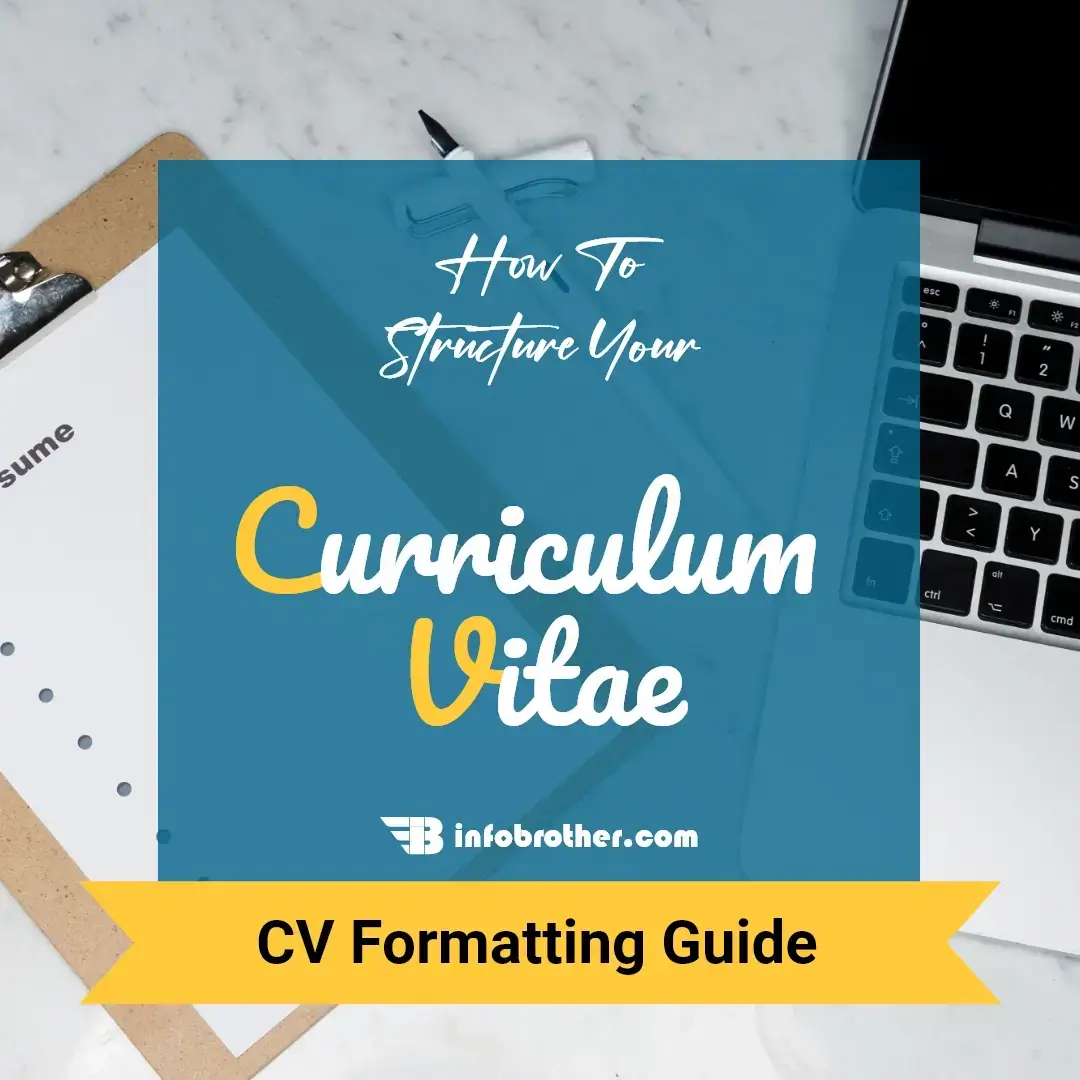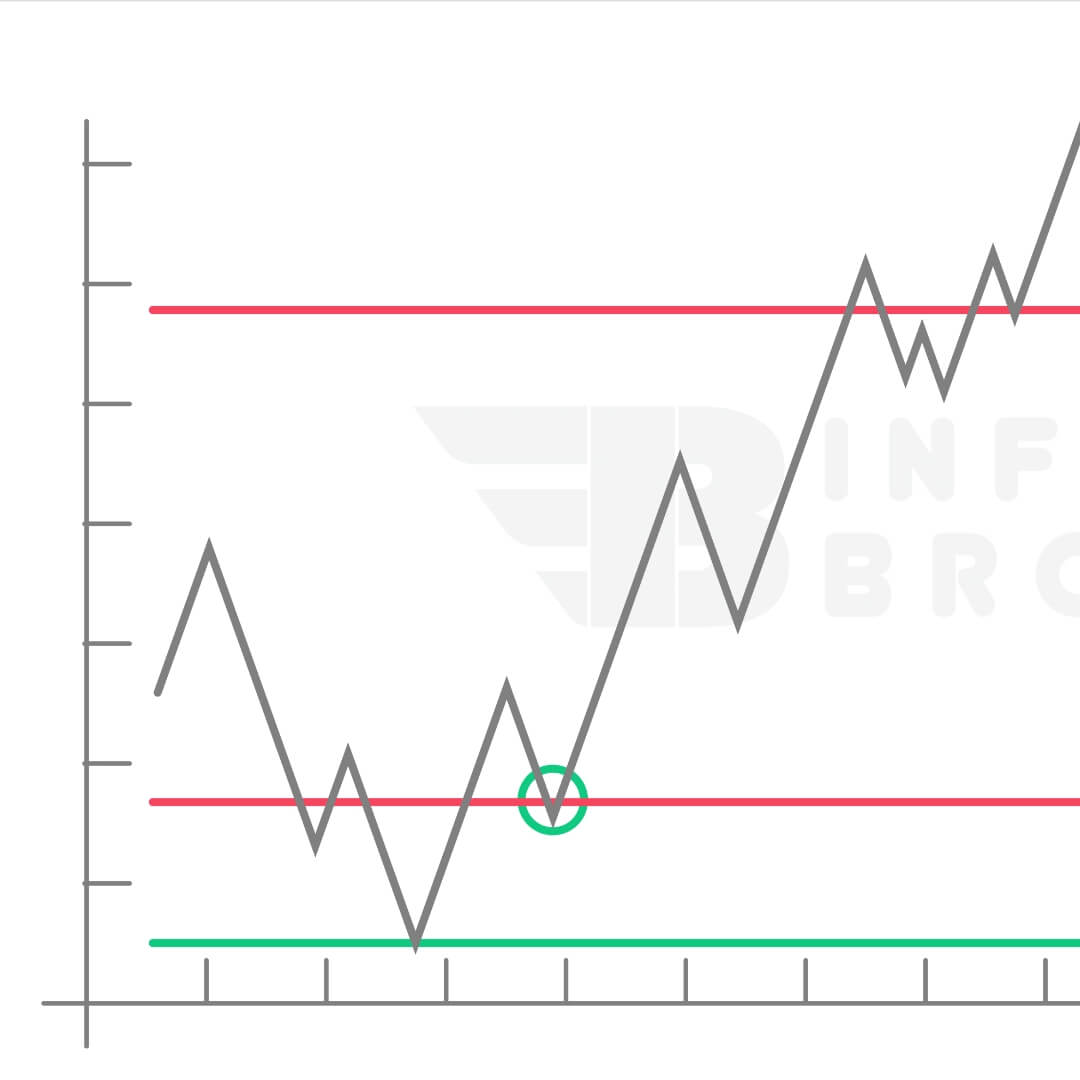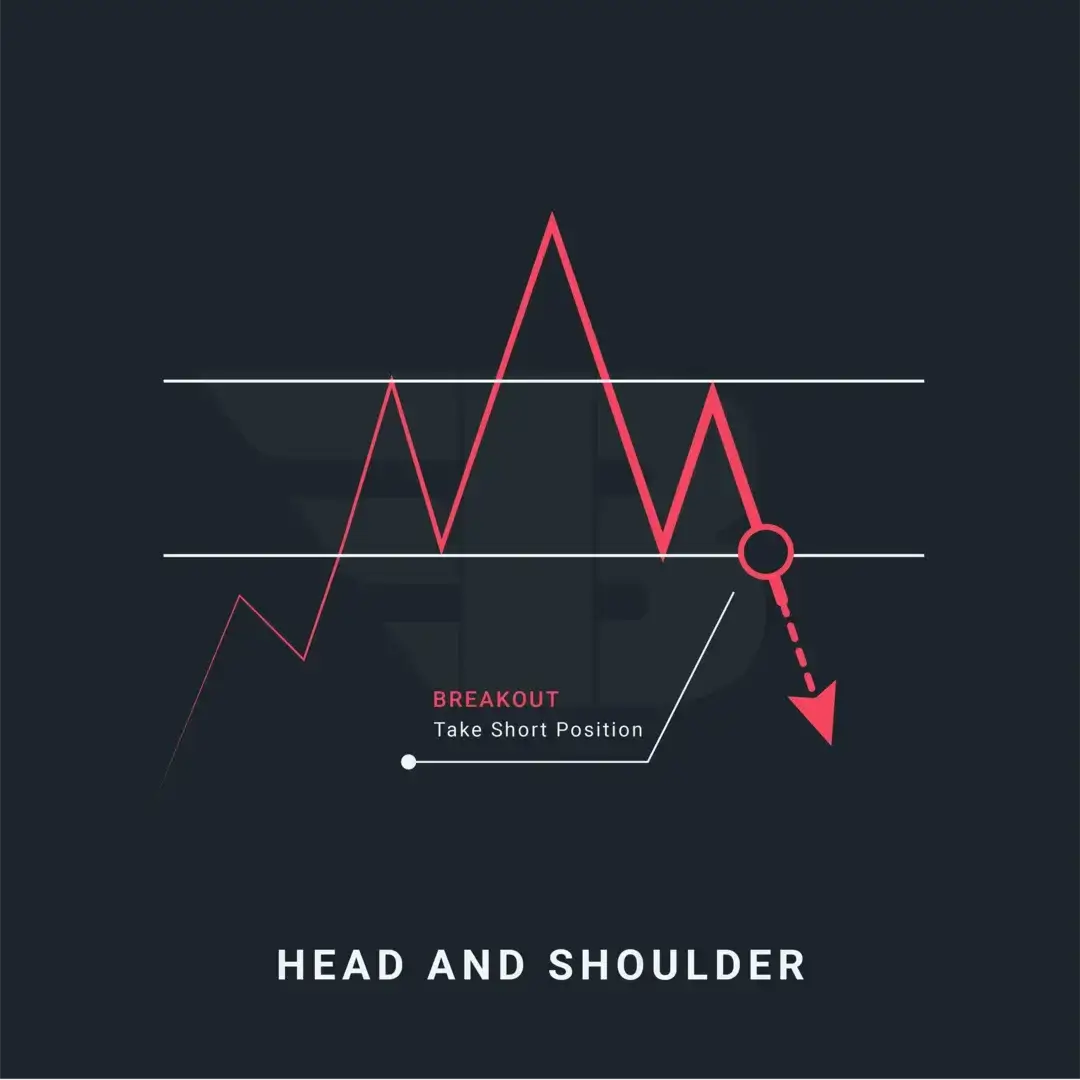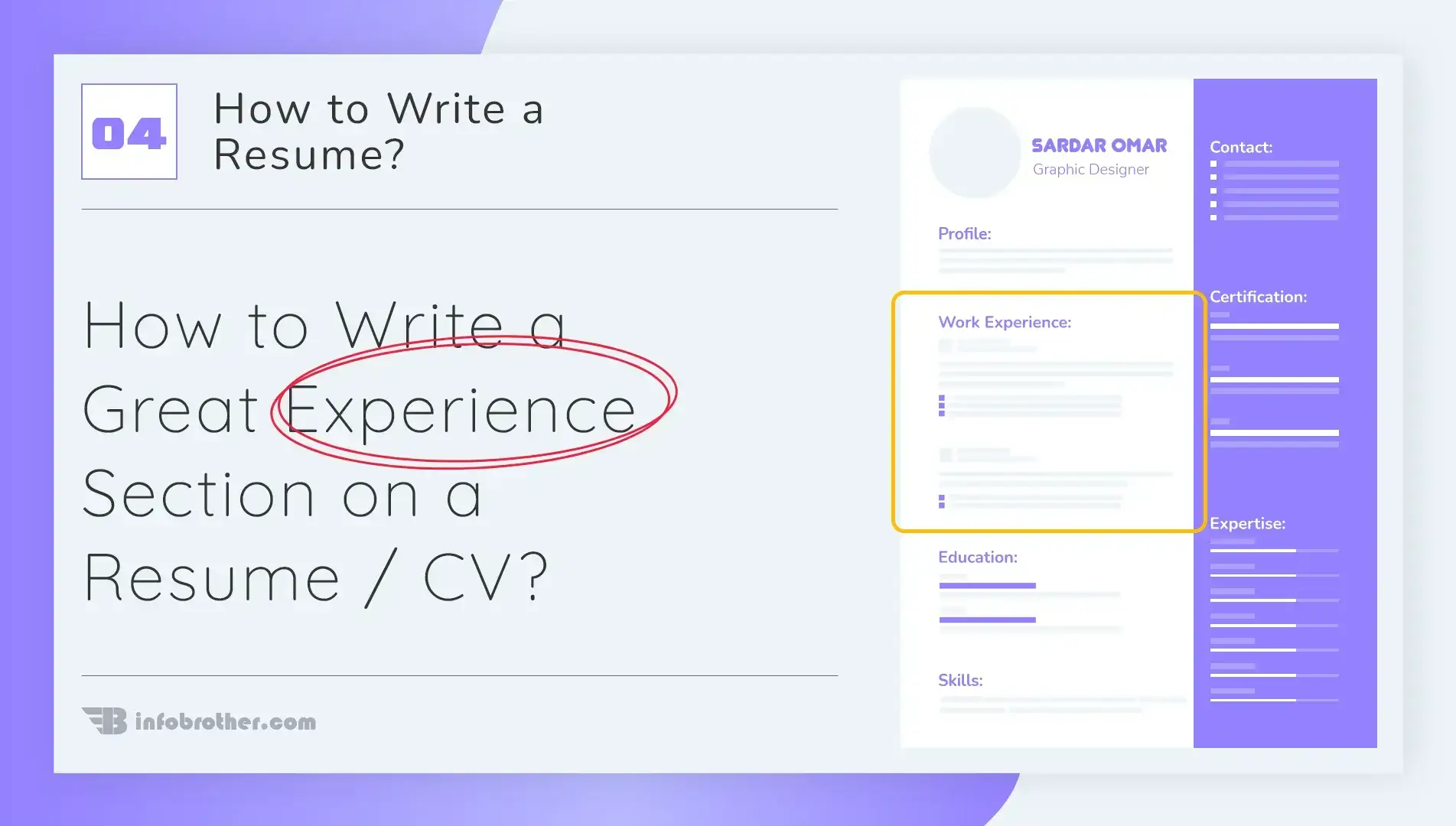
Crafting the Work Experience Section
How to List Work Experience on Your Resume: Best Practices & Tips
In order to understand your professional growth and learn more about your previous job titles and duties, potential employers will look at the experience section of your resume. The experience section's key is to demonstrate career development. While you have undoubtedly acquired more experience and skills over your working career, your job's upward direction will speak to your desire and readiness to grow.
It's usually advantageous to have skill sets outside of your present business, and listing them on a CV raises one's chances of being hired. Along the same lines, it's a good idea to exclude occupations that don't support the story you're attempting to tell the recruiting manager.
We'll go through how to put experience section on a resume step-by-step in this post, along with some concrete examples you can use.
Want a job-winning
Resume
Flat & Affordable Rates
Over 6,000 professionals have benefited from our expert CV writing service, which has helped them score more interviews and get employed faster.
Contact NowIn the experience area, you should mention your previous employers, the dates you worked for them, the roles you had, and brief summaries of your job duties. These should be strengthened using keywords, and quantifiable accomplishments given in a neat and condensed bullet-list format can improve them.
The information in the experience area is often organised in reverse chronological order, starting with your current job or most recent one and working backward through the earlier ones. Along with any relevant internships, you can also list any previous part-time, seasonal, or summer work in this area.
Listing your job history chronologically on your resume allows hiring managers to observe how your abilities have evolved over time and how your career has grown.
Since the job experience part is where you can truly sell yourself, you must make sure all the specifics are worked out and the layout is appropriate. First, we'll go through the fundamental layout, and then we'll get to the best strategies for making your job experience section stand out on your resume so that it truly shines.
An effective CV describes your past, who you are, and why you are the best person for the position being sought after. That doesn't imply you should explain your whole life narrative, because the recommended resume length is still one page. Instead, this is where you market yourself and boast about your prior duties and accomplishments.
You should mention your prior positions in reverse-chronological sequence. We advise using the typical job experience structure, which looks like this, to ensure that your resume is simple to read and understand:
- 1. Job Title and Position
- 2. Name/description/location of the company
- 3. Dates Employed
- 4. Responsibilities and Achievements
Now let's discuss the ideal procedures for experience section formation. We'll guide you through each area and show you how to complete them correctly.
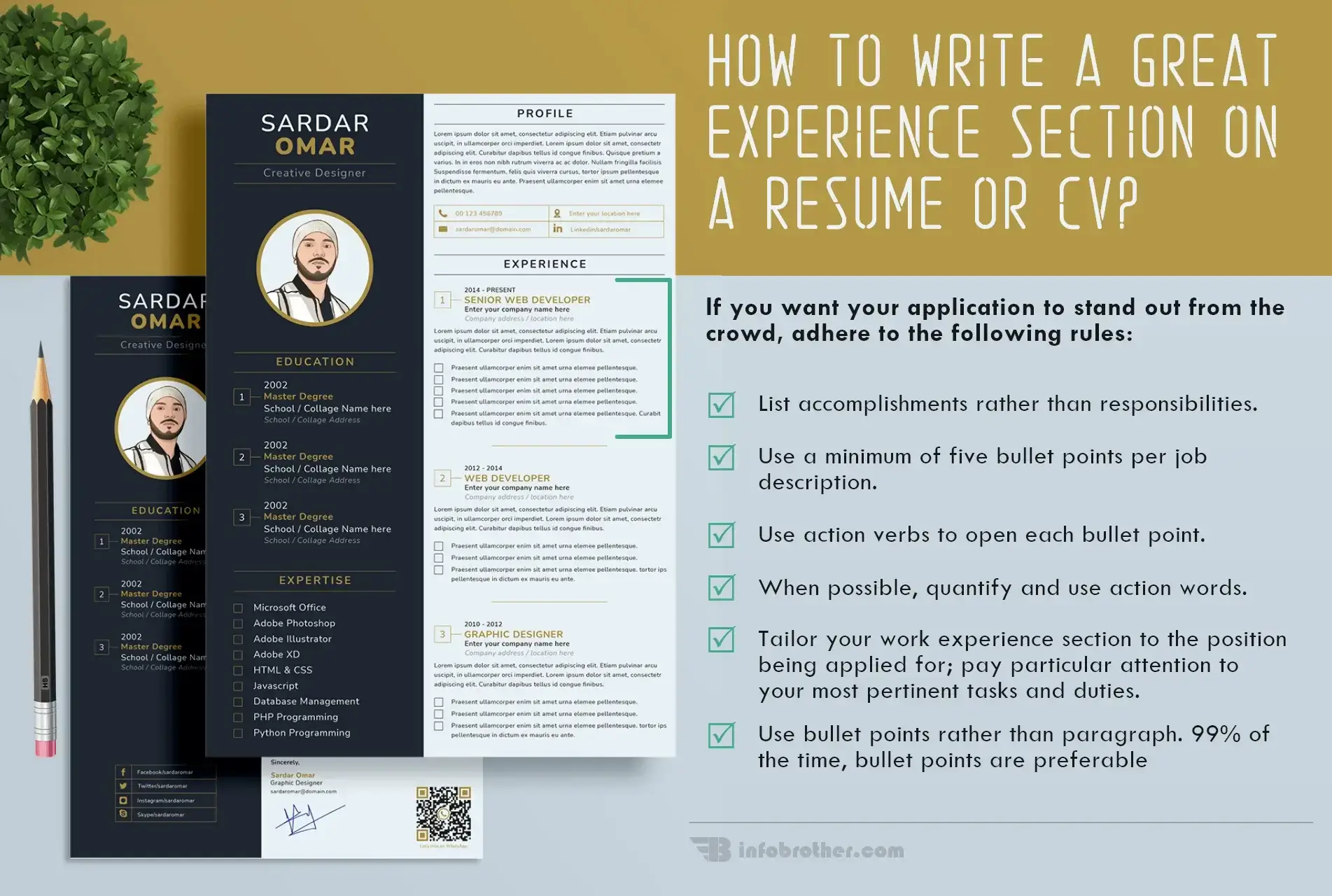
Your position is stated first. This will probably be the first portion of your resume that the HR manager examines, so make sure it's good. Make it simple for them to locate this by being prepared. There isn't much to say about this except that your job title should accurately describe what you did. To keep things simple, use the same name that appeared in the original job advertisement.
Digital Marketing Expert
Online Marketing Magician
If everything seems good, they'll ask for further information. If the business is not well known, you may also briefly explain it. Additionally, you should always provide the company's location. Try to keep the overall section around 3-5 jobs and only delete extra work experience if you're running out of space and can't eliminate any other area of your resume.
It seems very clear, no? Just state how long you held your previous position. And don't worry, you may offer an estimated timeframe if you can't recall the exact day you were employed. Dates are usually written in the format mm/yyyy.
Digital Marketing Manager
06/2015 - PRESENT
Digital Marketing Manager
June 20 of 2015 - PRESENT
If you want to use the mm/yyyy format, try to be consistent by making sure the format of your prior job experience listings matches.
When mentioning accomplishments on your CV, include any particular changes you made (we'll go through how to do this in more detail below) that the HR manager may apply to their organisation.
Always prioritize accomplishments above duties when possible. The HR manager has likely read identical applications with the same generic tasks over a hundred times by this point, so they are already aware of what your duties are.
However, if that isn't possible due to the nature of the position (such as cashier, entry-level, etc.), you may just make a list of your daily duties and obligations. Try to keep the list of your work duties to no more than six bullet points when discussing them.
Many people just highlight their tasks on a daily basis when mentioning their professional experience. If you want your application to stand out from the crowd, adhere to the following rules:
Don't merely include work tasks on your CV; instead, emphasize your accomplishments. Achievements demonstrate that you went beyond just meeting expectations to positively impact the operation of your organization. To demonstrate how efficiently including achievements may help your resume, examine these samples of job experience bullet points:
Good Bullet Point
increased landing page CTR by 12% in the first month through XYZ testing and changing the methods.
Bad Bullet Point
created social media advertising and worked with email marketing.
The first approach is efficient because it contains a figure that provides the hiring manager with an indication of how you'll do on the job if you're hired.
Pro Tip:
However, feel free to just state your responsibilities and tasks if you were in a position where you were unable to leave behind any noteworthy accomplishments (for example, a server in a restaurant, a cashier in a supermarket, etc.).
99% of the time, bullet points are preferable. They let you condense your writing and make it simpler to be precise and direct. When producing an academic CV rather than a resume, just use paragraphs rather than bullet points.
- Use a maximum of five bullet points per job description.
- Try to concentrate on explaining your quantifiable accomplishments in each bullet item rather than just your duties and job obligations.
- The section on your present employment should be the most detailed and include the most bullet points.
- Reduce the number of job description bullet points as you move back in time, and only include the most pertinent responsibilities and accomplishments.
- Don't go into detail about every piece of work you've completed. Each bullet point on your resume should merit a spot. Make sure that each job description is tailored or customised to the duties detailed in the job posting.
Hiring managers frequently come across resumes that have the words "responsible for" or "tasked with" at the beginning of each bullet item. This terminology is problematic since it is passive and does not accurately reflect your labour results. Instead, start each of your bullet points with a detailed resume action verb that demonstrates to hiring managers what you accomplished in your preceding positions.
Here are a few examples of action verbs that might be used to accurately summarize a job applicant's work history:
Organized a worker's compensation cost-saving campaign to improve workplace safety.
Developed new protocols for communication that boosted connections between the business and its customers.
Optimized logistics for product delivery that sped up client order fulfilment.
Start each bullet point on your resume with an active voice verb. Saying you were "responsible for accomplishing this and that" is inappropriate. Tell people you "did" it. Just like that.
Good Example
Managed the highly successful Lean Training project for three years. improved quality by 32%, cut lead times by 21%, and cut costs by 48%.
Bad Example
Responsible for administering the Lean Training initiative in order to increase quality and save expenses.
Pro Tip:
When describing your prior employment, use the past tense (e.g., "managed," "developed," or "supervised"). Use the present tense exclusively for the description of your current position.
When possible, utilize numbers to explain your job experience since figures provide hiring managers a better understanding of what you can accomplish. Include anything on your CV that demonstrates how you significantly increased performance.
Here are some examples of how you can use numbers to illustrate your great achievements:
- Clients acquired
- Dollars saved
- Customer satisfaction increased
- Revenue generated
- Customers served
- Expenses reduced
- Attrition rate decreased
- Sales numbers improved
The following are some examples of job experience resume bullet points with numbers:
Implemented new training programmes for circulation and access services librarians, resulting in a 40% reduction in total training time.
Saved the company $12,000 per month on printing expenses by acquiring two high-end printers and monitoring user training.
Commended for developing an internal newsletter to explain management's goal. reduced email correspondence between parties by 35%.
Any figures that aid in estimating the impact of your work must be included in the bullets of your resume and job description. Even if you are unable to provide precise numbers to explain your effort, you can use one of the methods listed above to estimate your accomplishments:
Good Example
Redesigned the e-commerce sales funnel through XYZ testing, resulting in increasing monthly revenue by 47%.
Bad Example
Significantly increased online sales.
The length of your resume should be determined by your level of experience. Look at this:
You may include up to 15 years of relevant employment history.
Include in-depth job descriptions for relevant roles in your field, as well as a quick mention of any other positions like internships, contract work, and freelancing.
Include any paid employment you've ever had on a list, along with any internships, part-time jobs, temporary jobs, freelance work, and independent ventures.
Include any employment history, both paid and unpaid: voluntary work, participation in student groups, experiential learning, unpaid internships, etc.
It's possible that someone advised you that job gaps are usually "red lights" for employers or that you should try to conceal them in your work history on your resume.
That's untrue. Employers are realising that it takes more time to discover a great fit between a job applicant and an organisation than it did 20 years ago, especially after the COVID-19 epidemic caused an increase in unemployment.
- Even extended periods of unemployment or unrelated experience are immaterial to employers if they are followed by professional expertise in your area.
- Current work gaps, as long as they haven't lasted more than nine months, have no bearing on the success of your job application.
- Modern employment gaps longer than nine months will only hurt your prospects if you're applying for positions requiring medium-to-low competence.
Let's summarize all the information we acquired in this post now. Here's a step-by-step guide to writing your resume's job description:
- Begin with your most recent or present position.
- Follow it up with the one that came before it, then the one before that, and so on.
- List the dates you worked, your job title, and the name of the employer.
- Include up to five bullet points that list your accomplishments.
- Tailor your work experience section to the position being applied for; pay particular attention to your most pertinent tasks and duties.
- When possible, quantify and use action words.

Sardar Omar
I did my hardest to present you with all of the information you need on this subject in a simple and understandable manner. However, if you have any difficulties understanding this concept or have any questions, please do not hesitate to ask. I'll try my best to meet your requirements.








